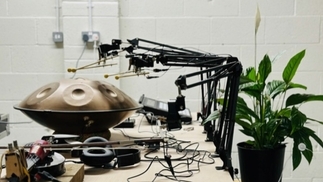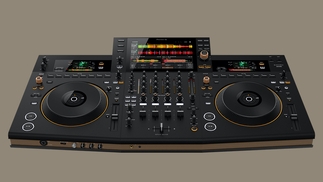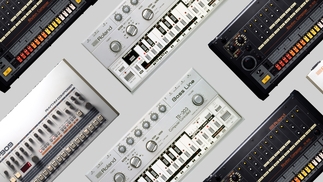Tech Talk: OC & VERDE
DJ Mag spent a little time with the guys talking all things tech...

What was the first bit of hardware that you acquired?
Jon: “The first actual piece of hardware was a Yamaha CS2x. I'd seen Sister Bliss from Faithless using one and then Depeche Mode using one live and that was my mind made up. Actually, I still have it in storage at the studio. Might have to dig it back out...”
What is your favourite bit of kit at the moment?
J: “I think we’d still have to say Native Instruments’ Maschine. There’s not a single original production or remix that we haven’t used it on. You can get your ideas down so quickly and easily, and then just drag them out as audio or MIDI. Like fishing with dynamite.”
How do you work in the studio?
Ben: “We like to make house-based grooves with our drums and percussion, and we keep the arrangement more inclined towards house, but tend to lean towards the tougher-sounding techno subs, textures and melodies with most of our tracks to get that big room effect. We’d usually have an idea of what kind of track we’re in the mood to make, and then get a groove going using Maschine, start hunting for vocals and then go from there. Although sometimes you find a vocal on an unnamed video sharing website and kind of build around it with the leads and chords, then the groove comes after. Totally depends from track to track.”
What are you using to get your sound — hardware, software, or a combination of it all?
J: “Definitely a combination. Some sounds come totally from in the box but then others have kind of just happened when playing with the Moog or the Prophet. In terms of sound, some of the soft synths you can get these days are so close to the real thing I’d challenge anyone to tell the difference once it’s been processed and effected. But the advantage that the hardware gives you is the ability to just start messing around and end up with a sound that’s actually decent. I think fundamentally it’s just important to use whatever equipment you know best, that’s how you’ll get the sound to where you want it to be.”
Do you use a lot of samples in your productions or do you program your sounds?
B: “A combination of both again really. We do find a fair few sounds online, but then we always create our own loops and grooves using Maschine. We have folders of kicks and hats that we’ve saved over the years, so that tends to be the library we use now.”
How did you go about producing the new EP on Steve Lawler’s iVAV label?
B: “‘Navajo’ was actually one of the tracks where we had the vocal first and built it from that. After ‘Maasai’ and ‘Solstice’, we actually tried to move away from vocals for a few tracks, but then we came across the vocal for ‘Navajo’ and knew we had to use it. It’s been the biggest track in our sets for a while now, and went down really well when Steve played it at the Ants opening at Ushuaia.”
J: “We used quite a heavy kick and sub on the track and the bass line is from the Moog. The lead is from messing about on Massive. We held back on the melody on this one, and kind of let the vocal do the work on it and it works. It's probably the biggest track in our sets at the moment, it really does the damage.”
B: “The other track on the release, Mañana, is a little more melodic. It still packs a punch, but we wanted to use strings and pianos and create something that sounded unique. It's got a summer vibe to it, wicked for day raves and beach parties.”
Your tracks have a lot of space in the mix, how important is it to create space and dynamics?
J: “Yeah, we try to create as much space as we can on our tracks. It just helps the main parts of the record stand out and sound crisp and clear. You can really tell when you hear the tracks in a big room or on a festival stage.”
B: “I think it's become quite fashionable to make tracks sound under produced in the house world at the moment, and that’s great with some tracks, but we want to get the best sound we can get, so the space, mix down and dynamics of our tracks are really important to us.”
What’s the key to a great mix?
J: “We were always told that ‘if it sounds right, it is right’, and as simple as that sounds, it’s so true. People spend hours adding effects to certain parts, which just ends up filling the mix. Everyone has their own idea on what makes a great mixdown anyway, so again it’s just doing what works for your own tracks I guess. I think the thing we do mainly is mix our tracks as we're going along, so we get every element sounding how we want it rather than doing it at the end.”

![Screenshot of [untitled] app interface](/sites/default/files/styles/djm_23_323x182_jpg/public/2023-09/untitled-app-music-new-1400x700.jpg?itok=pro0ZaB4)



